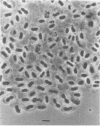Abstract
Azospirillum lipoferum RG6xx was grown under conditions similar to those resulting in encystment of Azotobacter spp. A. lipoferum produced cells of uniform shape when grown on nitrogen-free β-hydroxybutyrate agar. Cells accumulated poly-β-hydroxybutyrate and often grew as chains or filaments that eventually lost motility and formed capsules. Within 1 week, vegetative A. lipoferum inocula were converted into microflocs arising from filaments or chains. Cells within microflocs were pleomorphic, contained much poly-β-hydroxybutyrate, and were encapsulated. Some cells had a cystlike morphology. Up to 57% of the dry weight of encapsulated flocs was poly-β-hydroxybutyrate, whereas vegetative cells grown in broth with combined nitrogen had only 3% of their dry weight as poly-β-hydroxybutyrate. Neither encapsulated cells in flocs nor nonencapsulated vegetative cells were significantly desiccation resistant. Under starvation conditions (9 days) only 25% of encapsulated cells remained viable, whereas vegetative cells multiplied severalfold. In short-term germination experiments with encapsulated flocs, nitrate, ammonium, and soil extract promoted formation of motile vegetative cells. Most cells in treatments lacking combined nitrogen eventually depleted their visible poly-β-hydroxybutyrate reserves without germinating. The remaining cells retained the reserve polymer and underwent size reduction.
Full text
PDF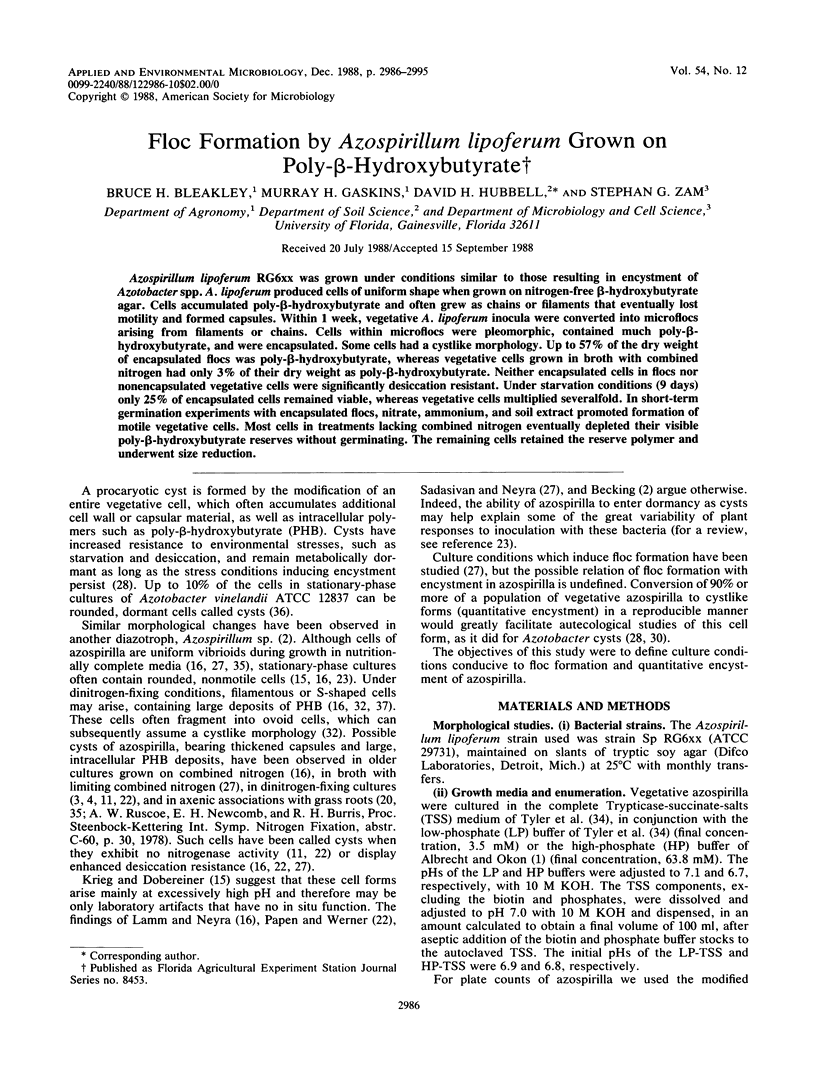
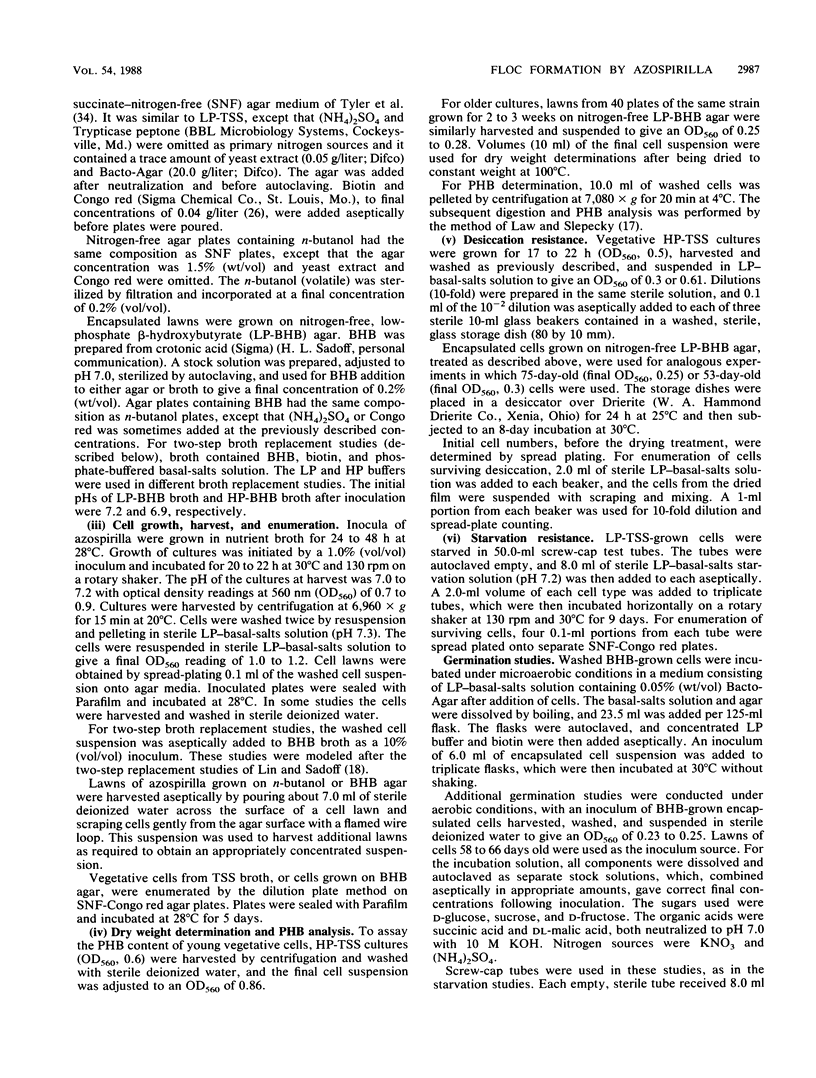

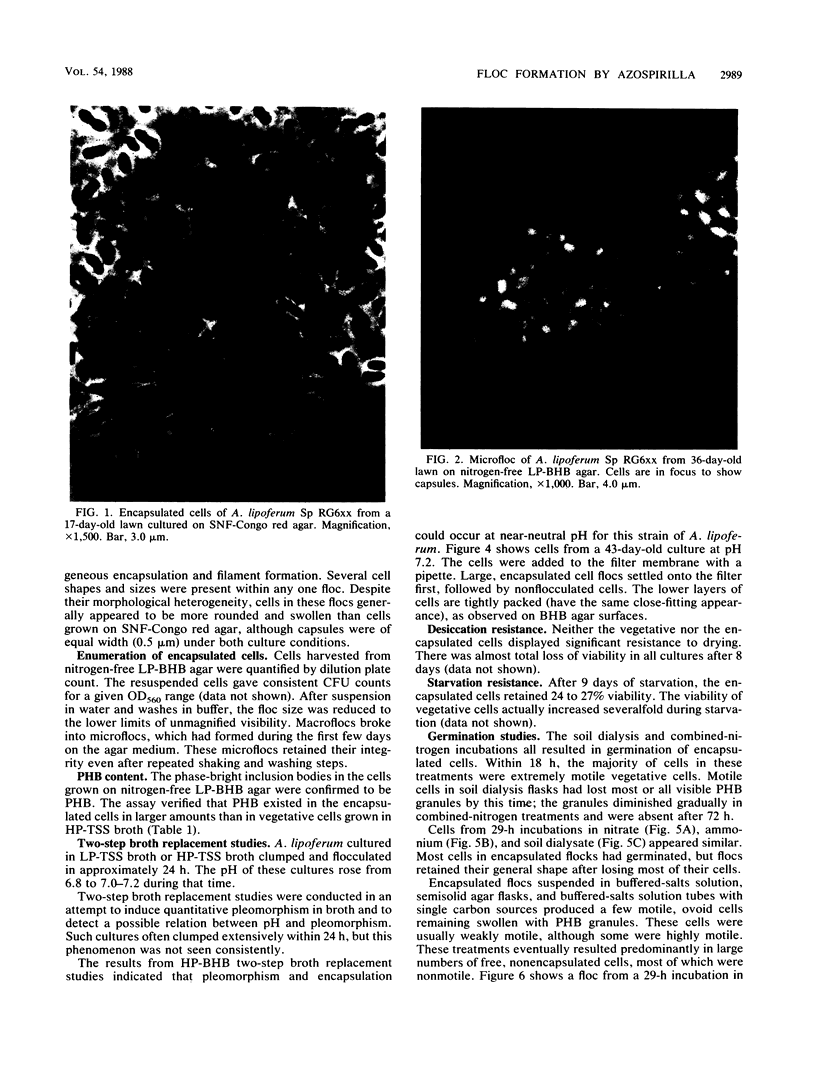

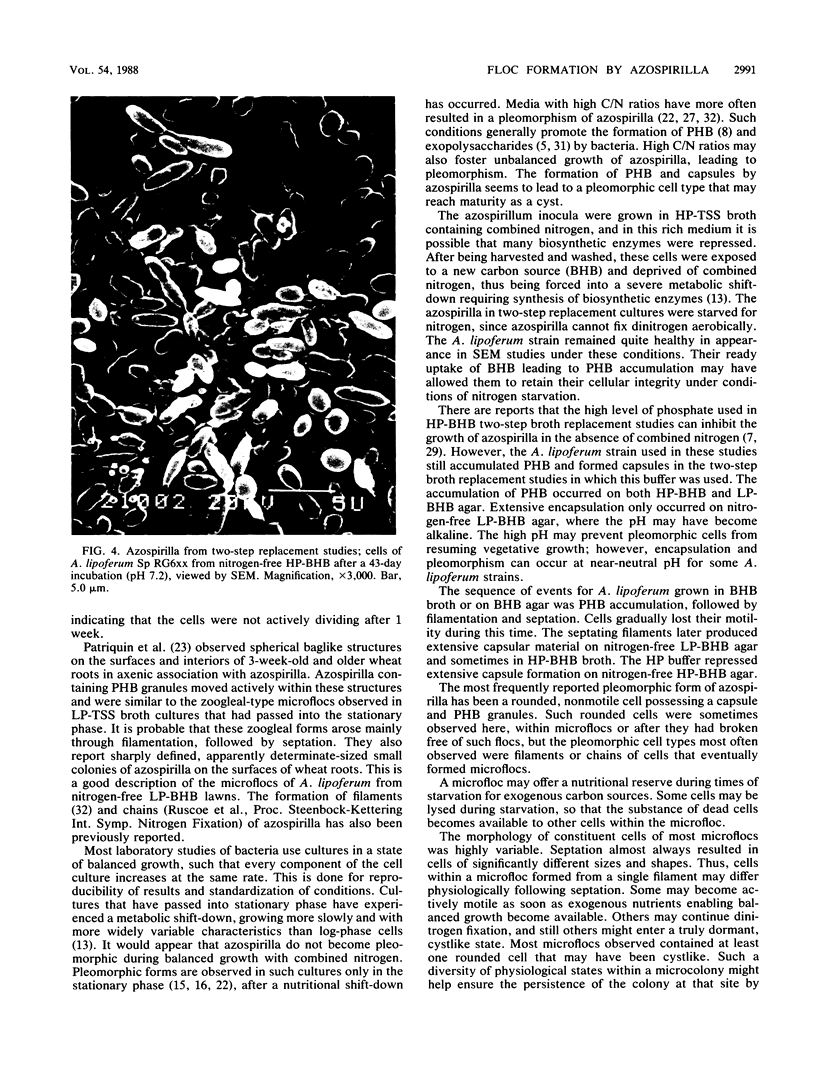
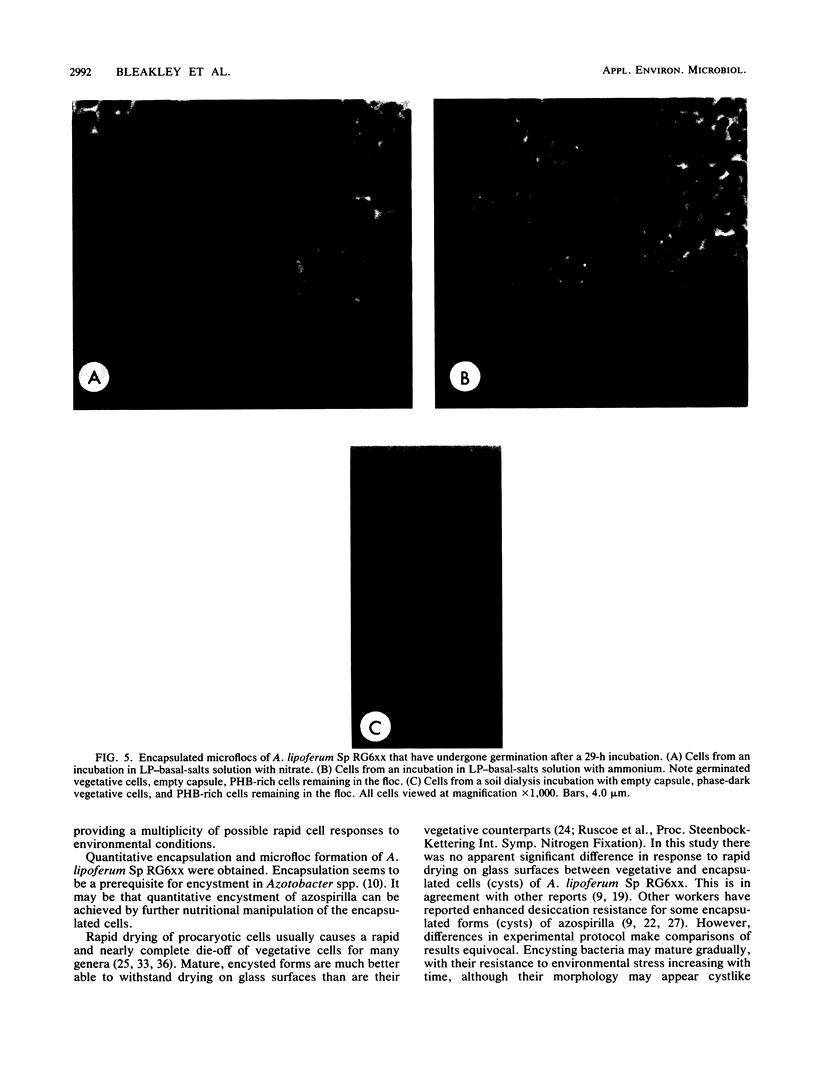
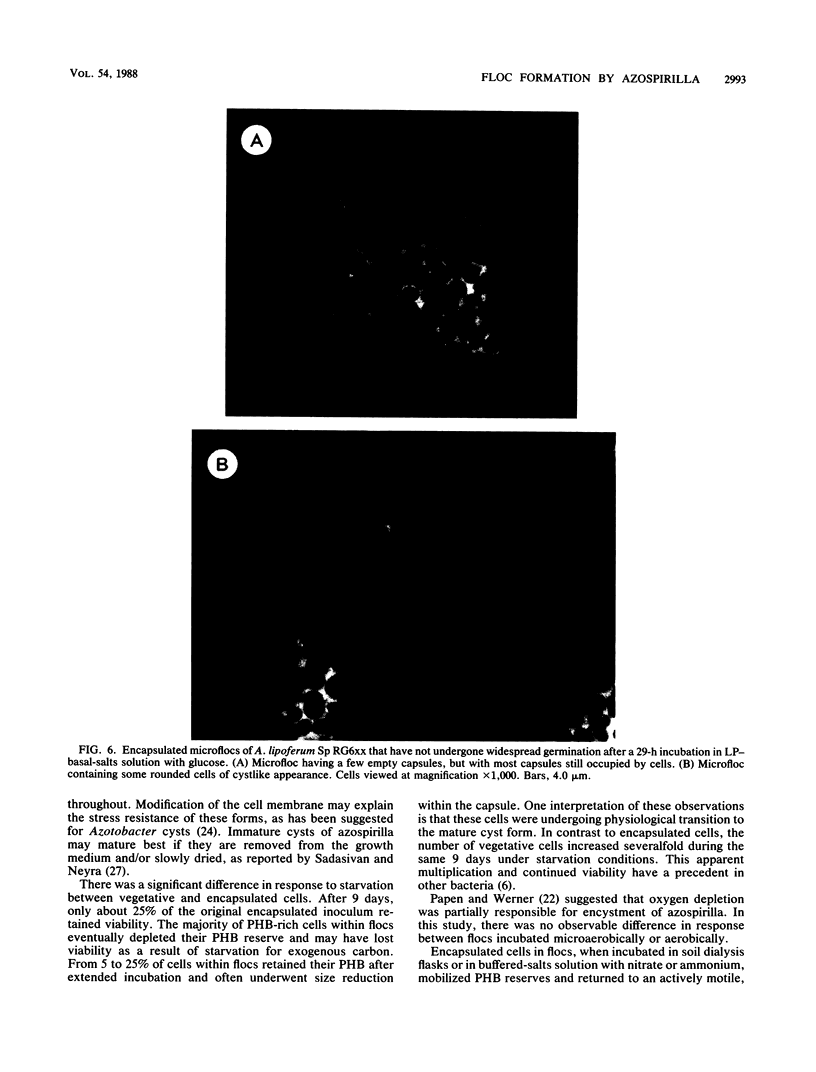
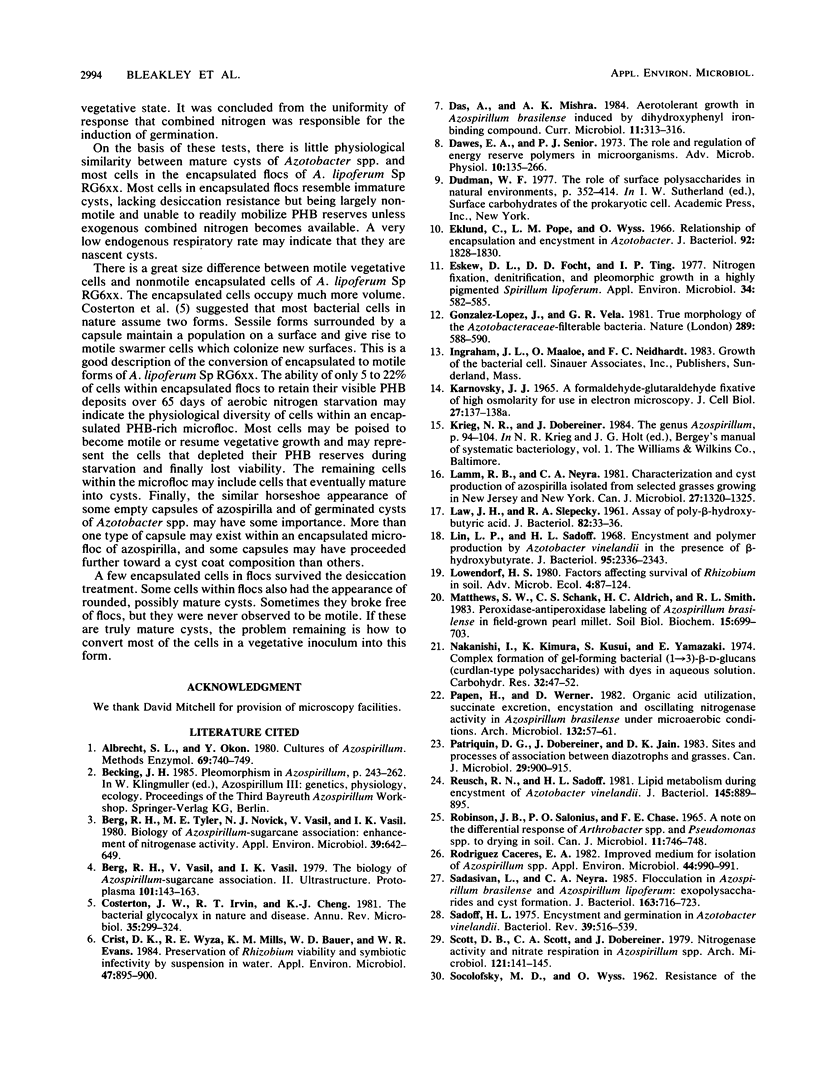
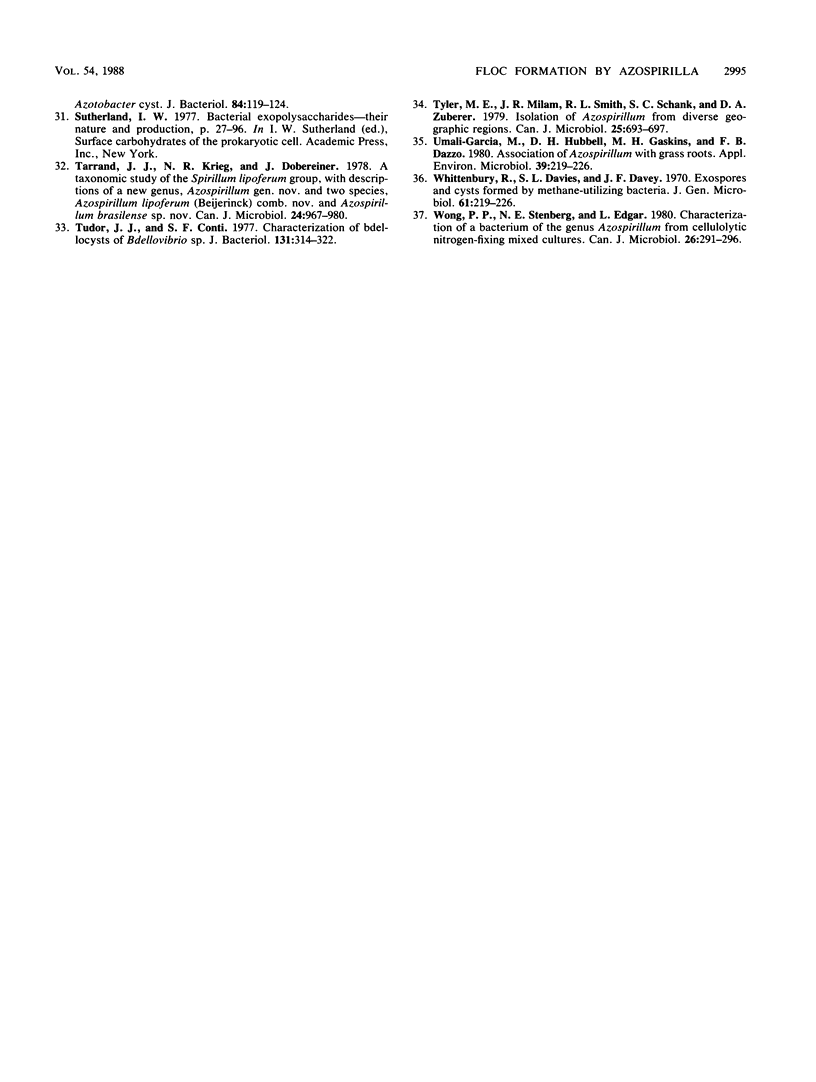
Images in this article
Selected References
These references are in PubMed. This may not be the complete list of references from this article.
- Berg R. H., Tyler M. E., Novick N. J., Vasil V., Vasil I. K. Biology of azospirillum-sugarcane association: enhancement of nitrogenase activity. Appl Environ Microbiol. 1980 Mar;39(3):642–649. doi: 10.1128/aem.39.3.642-649.1980. [DOI] [PMC free article] [PubMed] [Google Scholar]
- Costerton J. W., Irvin R. T., Cheng K. J. The bacterial glycocalyx in nature and disease. Annu Rev Microbiol. 1981;35:299–324. doi: 10.1146/annurev.mi.35.100181.001503. [DOI] [PubMed] [Google Scholar]
- Crist D. K., Wyza R. E., Mills K. K., Bauer W. D., Evans W. R. Preservation of Rhizobium viability and symbiotic infectivity by suspension in water. Appl Environ Microbiol. 1984 May;47(5):895–900. doi: 10.1128/aem.47.5.895-900.1984. [DOI] [PMC free article] [PubMed] [Google Scholar]
- Cáceres E. A. Improved Medium for Isolation of Azospirillum spp. Appl Environ Microbiol. 1982 Oct;44(4):990–991. doi: 10.1128/aem.44.4.990-991.1982. [DOI] [PMC free article] [PubMed] [Google Scholar]
- Dawes E. A., Senior P. J. The role and regulation of energy reserve polymers in micro-organisms. Adv Microb Physiol. 1973;10:135–266. doi: 10.1016/s0065-2911(08)60088-0. [DOI] [PubMed] [Google Scholar]
- Eklund C., Pope L. M., Wyss O. Relationship of encapsulation and encystment in Azotobacter. J Bacteriol. 1966 Dec;92(6):1828–1830. doi: 10.1128/jb.92.6.1828-1830.1966. [DOI] [PMC free article] [PubMed] [Google Scholar]
- Eskew D. L., Focht D. D., Ting I. P. Nitrogen fixation, denitrification, and pleomorphic growth in a highly pigmented Spirillum lipoferum. Appl Environ Microbiol. 1977 Nov;34(5):582–585. doi: 10.1128/aem.34.5.582-585.1977. [DOI] [PMC free article] [PubMed] [Google Scholar]
- LAW J. H., SLEPECKY R. A. Assay of poly-beta-hydroxybutyric acid. J Bacteriol. 1961 Jul;82:33–36. doi: 10.1128/jb.82.1.33-36.1961. [DOI] [PMC free article] [PubMed] [Google Scholar]
- Lin L. P., Sadoff H. L. Encystment and polymer production by Azotobacter vinelandii in the presence of beta-hydroxybutyrate. J Bacteriol. 1968 Jun;95(6):2336–2343. doi: 10.1128/jb.95.6.2336-2343.1968. [DOI] [PMC free article] [PubMed] [Google Scholar]
- Lopez J. G., Vela G. R. True morphology of the Azotobacteraceae-filterable bacteria. Nature. 1981 Feb 12;289(5798):588–590. doi: 10.1038/289588a0. [DOI] [PubMed] [Google Scholar]
- Reusch R. N., Sadoff H. L. Lipid metabolism during encystment of Azotobacter vinelandii. J Bacteriol. 1981 Feb;145(2):889–895. doi: 10.1128/jb.145.2.889-895.1981. [DOI] [PMC free article] [PubMed] [Google Scholar]
- Robinson J. B., Salonius P. O., Chase F. E. A note on the differential response of arthrobacter spp. and pseudomonas spp. to drying in soil. Can J Microbiol. 1965 Aug;11(4):746–748. doi: 10.1139/m65-100. [DOI] [PubMed] [Google Scholar]
- SOCOLOFSKY M. D., WYSS O. Resistance of the Azotobacter cyst. J Bacteriol. 1962 Jul;84:119–124. doi: 10.1128/jb.84.1.119-124.1962. [DOI] [PMC free article] [PubMed] [Google Scholar]
- Sadasivan L., Neyra C. A. Flocculation in Azospirillum brasilense and Azospirillum lipoferum: exopolysaccharides and cyst formation. J Bacteriol. 1985 Aug;163(2):716–723. doi: 10.1128/jb.163.2.716-723.1985. [DOI] [PMC free article] [PubMed] [Google Scholar]
- Sadoff H. L. Encystment and germination in Azotobacter vinelandii. Bacteriol Rev. 1975 Dec;39(4):516–539. doi: 10.1128/br.39.4.516-539.1975. [DOI] [PMC free article] [PubMed] [Google Scholar]
- Tarrand J. J., Krieg N. R., Döbereiner J. A taxonomic study of the Spirillum lipoferum group, with descriptions of a new genus, Azospirillum gen. nov. and two species, Azospirillum lipoferum (Beijerinck) comb. nov. and Azospirillum brasilense sp. nov. Can J Microbiol. 1978 Aug;24(8):967–980. doi: 10.1139/m78-160. [DOI] [PubMed] [Google Scholar]
- Tudor J. J., Conti S. F. Characterization of bdellocysts of Bdellovibrio sp. J Bacteriol. 1977 Jul;131(1):314–322. doi: 10.1128/jb.131.1.314-322.1977. [DOI] [PMC free article] [PubMed] [Google Scholar]
- Tyler M. E., Milam J. R., Smith R. L., Schank S. C., Zuberer D. A. Isolation of Azospirullum from diverse geographic regions. Can J Microbiol. 1979 Jun;25(6):693–697. doi: 10.1139/m79-100. [DOI] [PubMed] [Google Scholar]
- Umali-Garcia M., Hubbell D. H., Gaskins M. H., Dazzo F. B. Association of azospirillum with grass roots. Appl Environ Microbiol. 1980 Jan;39(1):219–226. doi: 10.1128/aem.39.1.219-226.1980. [DOI] [PMC free article] [PubMed] [Google Scholar]
- Whittenbury R., Davies S. L., Davey J. F. Exospores and cysts formed by methane-utilizing bacteria. J Gen Microbiol. 1970 May;61(2):219–226. doi: 10.1099/00221287-61-2-219. [DOI] [PubMed] [Google Scholar]
- Wong P. P., Stenberg N. E., Edgar L. Characterization of a bacterium of the genus Azospirillum from cellulolytic nitrogen-fixing mixed cultures. Can J Microbiol. 1980 Mar;26(3):291–296. doi: 10.1139/m80-049. [DOI] [PubMed] [Google Scholar]



